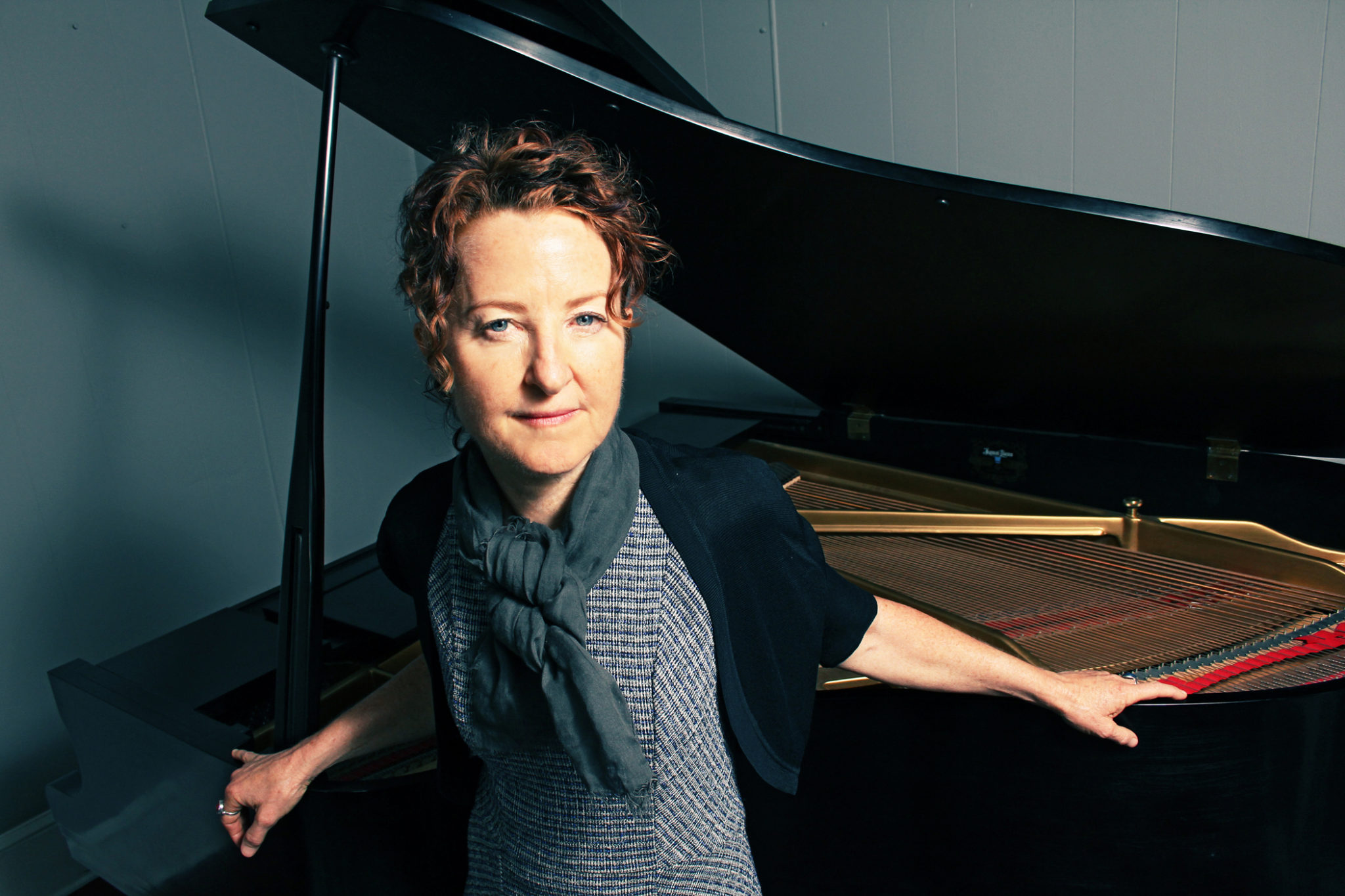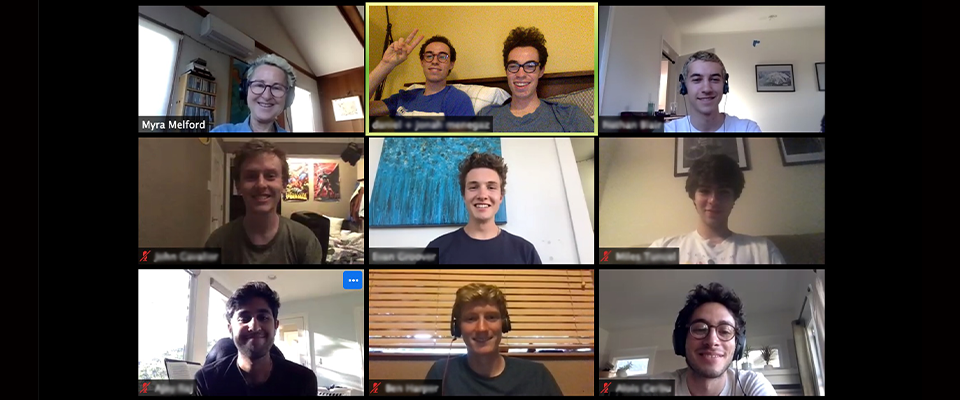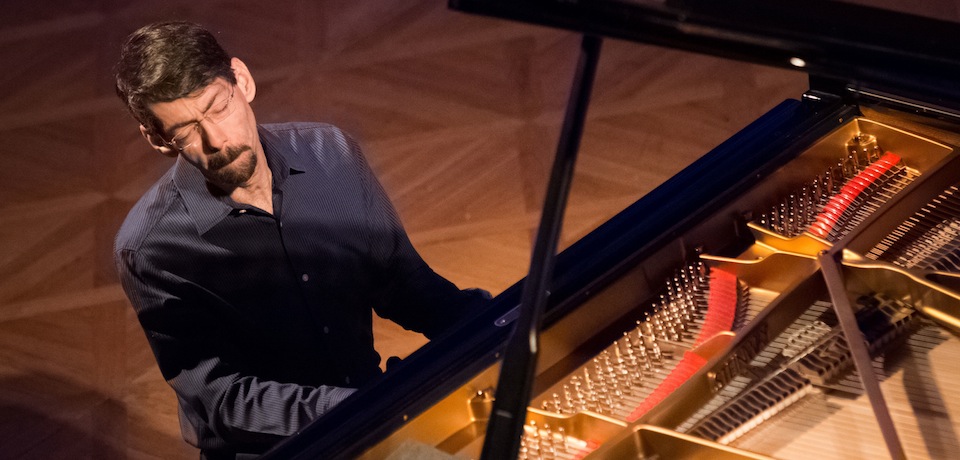This week, Cal Performances presents Language of Dreams, a non-narrative multi-media production featuring jazz pianist Myra Melford and her musical ensemble, Snowy Egret.
The production will feature video, narration and movement inspired by Genesis—the first book in the landmark trilogy Memory of Fire, written by Uruguayan author Eduardo Galeano. Published in the mid-1980s, Memory of Fire compiled creation stories, mythologies, gossip, historical vignettes, songs and other overlooked sources to create a literary mosaic of life just before and after Spain and Portugal started colonizing the New World.
Melford, a music professor at UC Berkeley, is a deeply lyrical player with a passion for classical Hindustani music, blues and Afro-Caribbean grooves—which is reflected in Language of Dreams. Known for her percussive touch and extended technique (like sliding her elbows across the keys), she’s a bandleader with a profound gift for marshalling highly distinctive instrumental voices. Melford has created a series of celebrated ensembles stocked with many of jazz’s most vivid improvisers.
Before joining Berkeley’s music faculty in 2004, she spent nearly two decades as a leading figure on New York’s left-field jazz scene, and she credits fellow sonic explorer Fred Frith with turning her onto Galeano. The British-born guitarist teaches at Mills College, and often brings Melford into his classes as a guest. Like Melford, he’s often drawn on literary sources for inspiration as a composer, and “he mentioned that he found the form of Galeano’s writing particularly interesting when he was talking about musical structure,” Melford says. “He recommended I check out Genesis, which features very short chapters, from indigenous pre-Columbian myths to early accounts of the first colonizers. Galeano was trying to demonstrate that the only real way to get a sense of history is by reading a whole bunch of people’s stories, and I loved that.”
Melford designed her latest band, Snowy Egret, around Language of Dreams, and introduced the band on her critically hailed 2015 album Snowy Egret (Enja). Featuring her long-time comrade Stomu Takeishi on acoustic bass guitar, guitarist Liberty Ellman, cornetist Ron Miles, and drummer Tyshawn Sorey, the quintet won the Jazz Journalists Association award for Midsize Ensemble of the Year in June.
The group often performs as a unit, but for Language of Dreams it’s augmented by video projections by Bay Area artist David Szlasa, butoh-inspired movement by Los Angeles-based dancer/choreographer Oguri, and narrator Sofia Rei, a New York-based Argentine jazz vocalist who recites Galeano’s text in Spanish and English.
Rei was a relatively late addition to the production. The role is different than those she is used to singing, requiring her to employ her remarkable musicality rather than sumptuous vocals. “I’m not singing one note!” Rei says. “But she made a good choice to call a musician rather than an actor. I have to be in sync with what the band is doing all the time. Myra’s music is rhythmically challenging with a lot of odd meters. I think an actor would have been pretty lost on how to fit in.”
“I told the musicians about the structure of the book, looking for a through line or tension to hold all these little bits of music together,” Melford says. “I told them a general description of the story, but I wanted them to play my musical response.”
This isn’t the first time that Melford has found inspiration far afield from music. The Chicago-area native grew up in a house designed by Frank Lloyd Wright, and she speaks often of his organic architecture as a model for her compositional sensibility. She’s written music inspired by the mystical verse of Rumi, the modernist prose of James Joyce and the color-saturated paintings of the late Sacramento artist Don Reich.
Rather than trying to encapsulate Galeano’s sprawling multi-directional narrative, she started by responding directly to his prose “very much at face value,” she says. “The rhythm of that text is fascinating. I didn’t do this in an intellectual, systematic way. I told the musicians about the structure of the book, looking for a through line or tension to hold all these little bits of music together. I told them a general description of the story, but I wanted them to play my musical response. Some musicians like to have the text too, and that became another layer of meaning.”
In many ways Melford is expanding on Galeano’s mission of spreading historical consciousness by other means. “His work is historical but not history,” says UC Berkeley Associate Professor of Colonial Studies Ivonne del Valle, who joins Melford for Cal Performances’ first Page and Stage event 6 p.m. Wednesday at the Musical Offering, a discussion focusing on Galeano’s Genesis moderated by Cal Performances associate director Rob Bailis. “It’s very literary and abstract, an entry point to the history of Latin America for millions of people who would never read a history book.”
Language of Dreams originally premiered in 2013 at Yerba Buena Center for the Arts, but will showing at Cal Performances at Zellerbach Hall on Saturday, Nov. 19.
Members of Snowy Egret, Oguri, and Szlasa convene 3–4:30 p.m. this Friday in 125 Morrison Hall for a Composer Colloquium discussion about the process of creating and performing Language of Dreams.





















